
11 Ways for Product Managers to Collect User Feedback
Surveys reveal that 28% of consumers get frustrated when they cannot find information about your products. The only way to know this information and many other significant facts about your business is to collect user feedback often.
From a product management perspective, user feedback is vital to your product's success. It allows you to track how users interact with your product, what features they like and don't like, and what bugs need to be fixed.
There are many different ways to collect user feedback. This article will discuss 11 ways to do so, but let's start with some critical considerations.
What to Consider Before Collecting Customer Feedback?
Collecting feedback from customers is an important part of any business. It helps you know where you stand, what to improve, and what to work on. It also enables you to better understand your customers so that they can be more satisfied with your product or service.
But before collecting customer feedback, some things should be considered first.
What are your company's goals and objectives?
These are basic questions every company is trying to answer when they indulge in gathering customer feedback:
- What do customers think about your service?
- What do they like and dislike about your product?
- Are there any improvements that you can make to make the service better?
- How can you improve customer satisfaction and loyalty?
You need to decide what exactly you want to learn from customer feedback. It can be about customer service, user engagement, product design, user experience, usability, user engagement, market demand, users’ preferences, and so on.
Who will you be collecting feedback from?
It's essential to get feedback from different types of users, including power users, new users, and lapsed users. This will give you a well-rounded view of how your product is being used and what improvements can be made.
Customer, client, and employee feedback will all be helpful in different ways. Feedback from customers and clients tells us how you are doing with the service you provide them and what needs improvement.
Feedback from customer-facing teammates helps them understand what needs to be changed in the product to do their job better.
What are the methods for collecting feedback?
Ensuring a customer feedback process to gather and user feedback to inform product decisions properly is a must. This means having a system for analyzing, categorizing, prioritizing, and responding to feedback to close the feedback loop.
There are various methods for collecting feedback, such as customer feedback surveys, user interviews and polls, customer feedback portals, focus groups, online communities, and social media channels.
What are the benefits of collecting customer feedback?
Customer Feedback Helps In Making Better Product Decisions
Collecting user feedback and customer reviews helps you make better product decisions. With feedback, you can validate your product hypotheses and ensure you build the right features.
It makes no sense to go through your entire product roadmap and build features no one wants or needs. This is a huge waste of time and resources.
With user feedback, you can avoid this pitfall. You can use feedback to determine which features are most important to your users and prioritize accordingly.
You can also use feedback to make changes to your product before you release a new version to ensure you align with what your users want.
In addition to helping you make better product decisions, feedback enables you to improve your customer relationships.
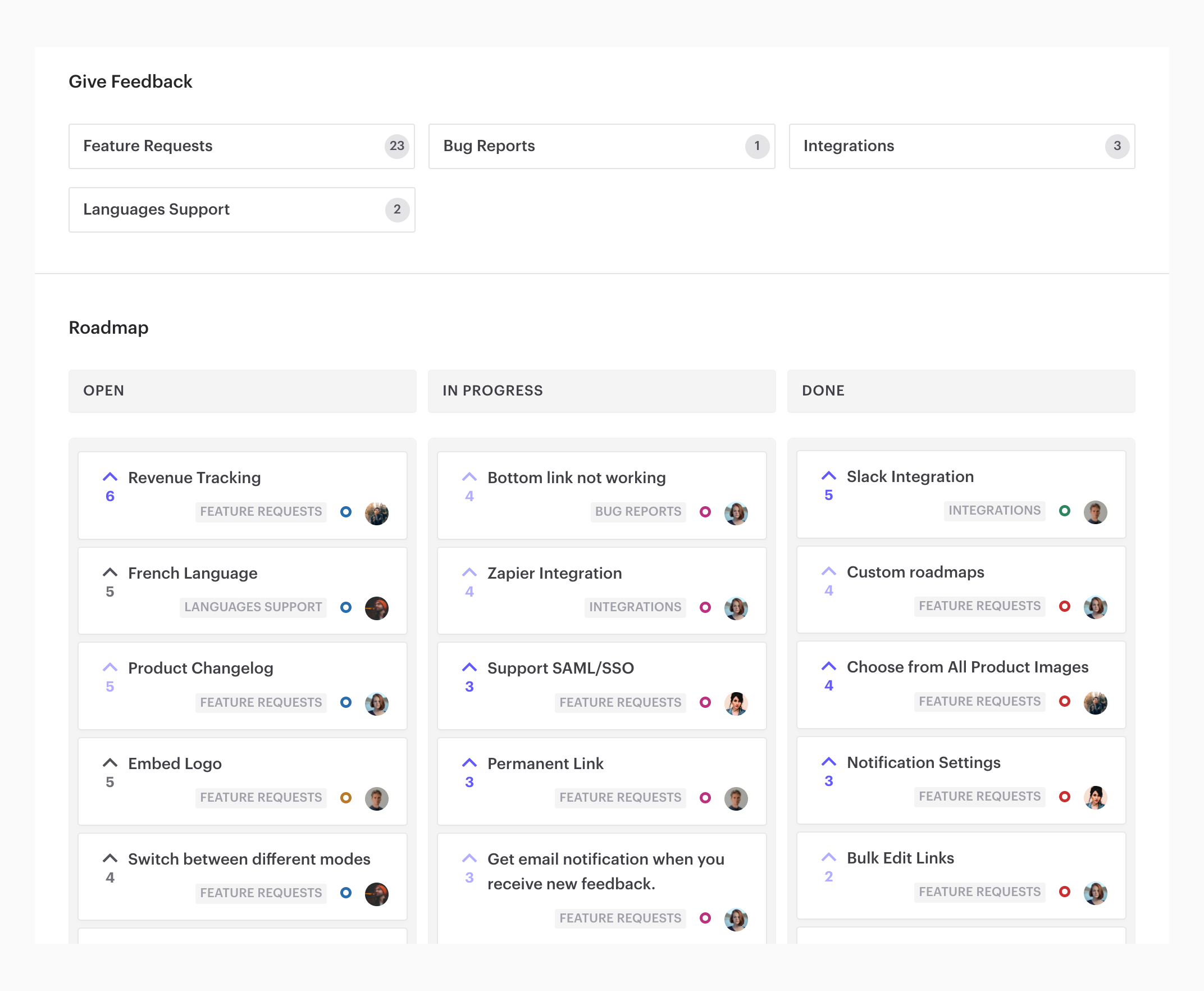
Build Better Relationships with Your Users
When you show that you care about their opinion and are willing to listen to their feedback and make changes to your product based on it, you build a better relationship with your users.
This is important because happy users are likely to continue using your product and recommend it to others, supporting word-of-mouth advertising for your product. They are also more forgiving if you make a mistake or release an update with bugs.
On the other hand, unhappy users are more likely to churn and leave negative reviews. This can damage your reputation and make it harder to attract new users.
According to CSE 2019 report, an alarming 72% of consumers report they are likely to switch to a competitive brand after just one bad experience.
In addition to building a better relationship with your users, feedback can also help you improve your customer support.
Improve Your Customer Support With User Feedback
Customer support is another area where user feedback can be constructive. With feedback, you can identify common issues that users are having and make changes to your product accordingly to close the feedback loop as well.
This can help reduce the number of support tickets you receive and free up your customer support team to deal with more complex issues.
In addition, feedback can help you improve your self-service documentation and knowledge base. By identifying common issues, you can create articles or tutorials that address these problems.
This way, users can find the answers to their questions without contacting customer support.
Now that we've gone over some of the benefits of user feedback let's look at some of the different ways product managers collect user feedback.
Best Methods for Gathering User Feedback For Product Managers
There are many different ways that you can collect user feedback. The best way to collect feedback will depend on your specific needs and goals. Here are some of the most popular methods for collecting user feedback:
Customer Interviews/1-on-1 Feedback
Customer interviews involve reaching out to your users individually and talking to them about their experiences with your product.
Customer interviews are valuable for getting 1-on-1 detailed and specific feedback. In addition, customer interviews can help you build a relationship with your users.
The customer interview feedback is an important aspect of the customer-centric approach. The feedback is gathered from customers to understand their opinion about the product and what they want to see in it.
In-App Product Feedback
One of the easiest ways to collect user feedback is by using an in-app feedback tool like Rapidr. These tools allow you to collect feedback directly from your users while using your product without leaving the app.
This is a great way to collect feedback because you can be sure that the feedback is coming from active users who are using your product.
In addition, in-app feedback tools make it easy to collect feedback with feedback buttons, so you don't interrupt your users with surveys or other forms of outreach.
Instead, users can simply provide feedback when they encounter a problem or a bug or have an idea or suggestion for a new feature.
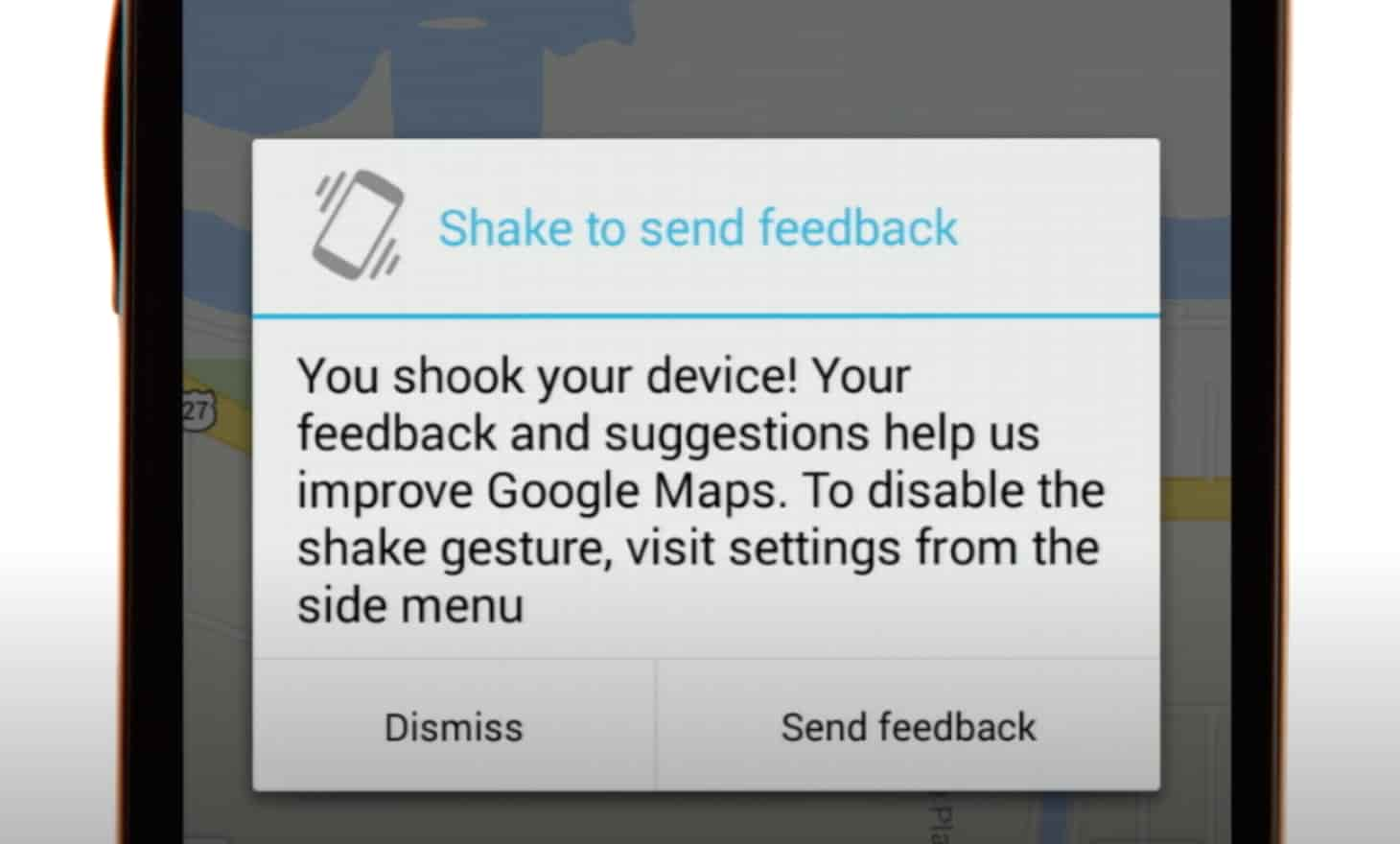
Customer Feedback Surveys and Polls
Another popular method for collecting user feedback is through surveys. You can use surveys to collect feedback at different points in the customer journeys, such as after someone uses your product for the first time or when they cancel their subscription.
Surveys such as NPS, CSAt etc are a great way to collect feedback because they allow you to ask specific questions and get detailed responses.
In addition, surveys can be automated so that you can send them out to large numbers of users without needing to reach out to each one manually..
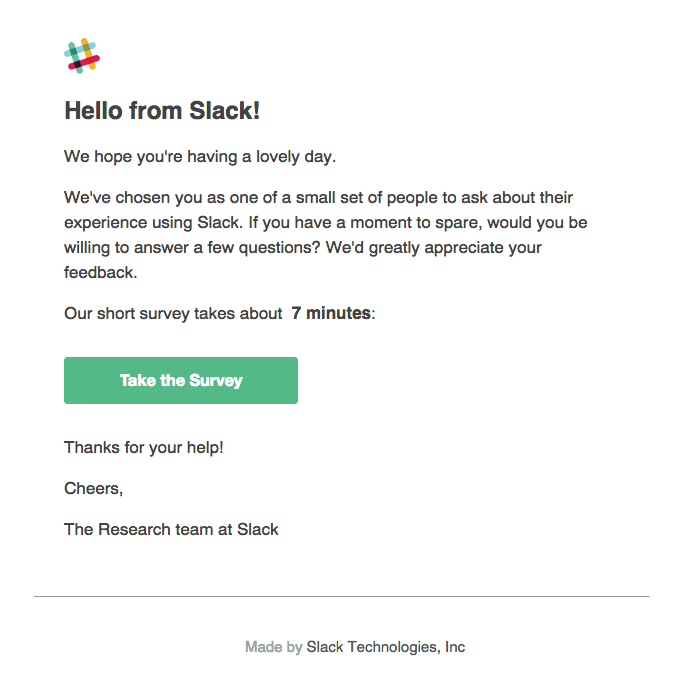
Customer Feedback Portals
Customer feedback tools such as Rapidr allows businesses to collect customer feedback and improve their product or service. They can be used in many ways to analyze customer sentiment, identify the most pressing issues and provide a feedback loop for the business.
Most of these portals offer a simple way for customers to provide feedback on their experience with the company. They can give constructive criticism or praise on a product or service and help businesses improve their products. They can be used in the following ways:
- To collect customer opinions about a product or service
- To get insights into customer needs and expectations
- To improve customer service
- To help with marketing campaigns
- To showcase progress and send release notes
- To close the customer feedback loop
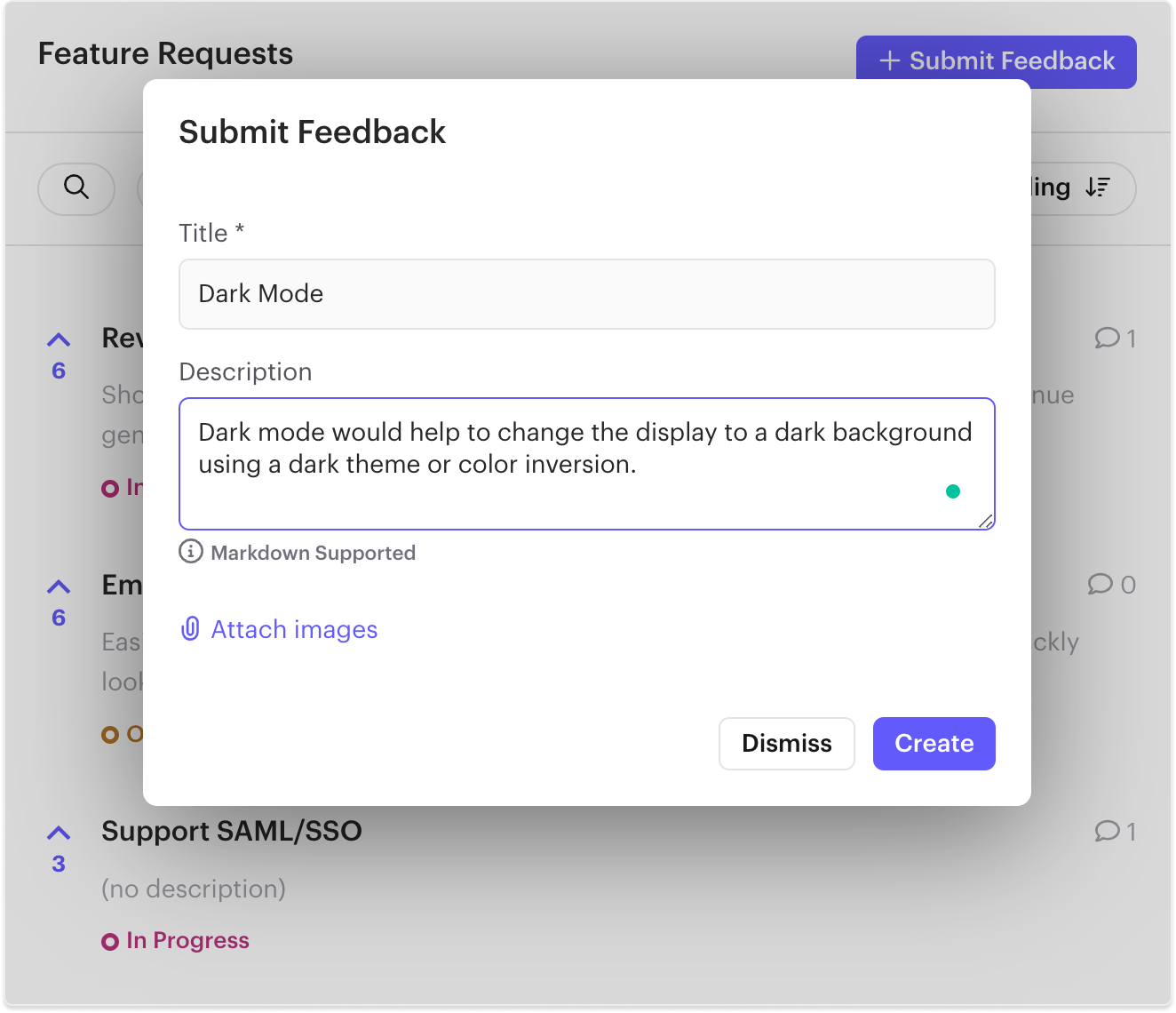
Focus Groups
Focus groups are a way to get feedback from people who are not your target audience. The group is made up of 5-8 people, and the moderator asks questions about the product. The moderator should be trained in interviewing techniques.
The moderator should prepare a list of questions to help them gather information about the product or service they are testing. This list could include:
- What did you think of this product?
- What did you like best about this product?
- What did you dislike most about this product?
- How would you improve this product?
- Who do you think would like this most?
User Forums and Feedback communities
User forums and feedback communities are other excellent places to collect feedback. They allow users to discuss their experiences with your product and give feedback to other users.
A user forum is a place where community members come together to discuss various topics, such as the latest updates, technical issues, or general feedback. The company usually hosts a forum to discuss its products and services.
User forums are a great way to interact with your target audience. You can also find out what they like and what they don't like about your product. User forums also help people share their knowledge and make new friends.
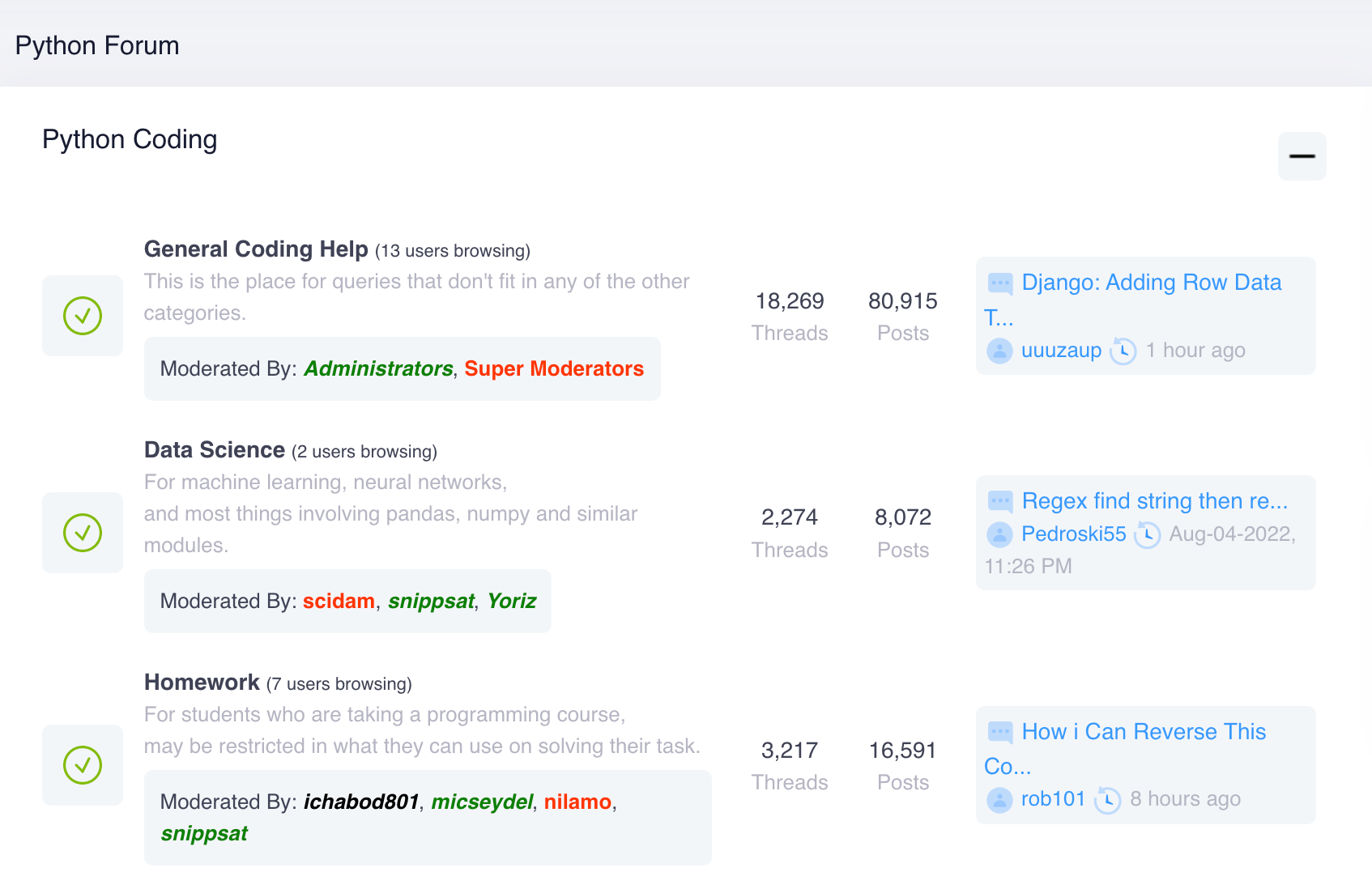
Website Feedback Buttons & Feedback Widgets
Feedback buttons and feedback widgets are great for getting customer insights and making improvements to your website.
There are many different ways of collecting feedback from your customers. You can use a feedback button, a widget, or an email form. Buttons and feedback widgets are very simple to implement on your site with website feedback tools like Rapidr. You can also customize them to fit in with the design of your site.
Website feedback buttons and widgets allow for quick and easy customer feedback on the go. This type of feedback is more authentic since it is submitted in real-time, as opposed to survey responses which are often forgotten about or not given at all.
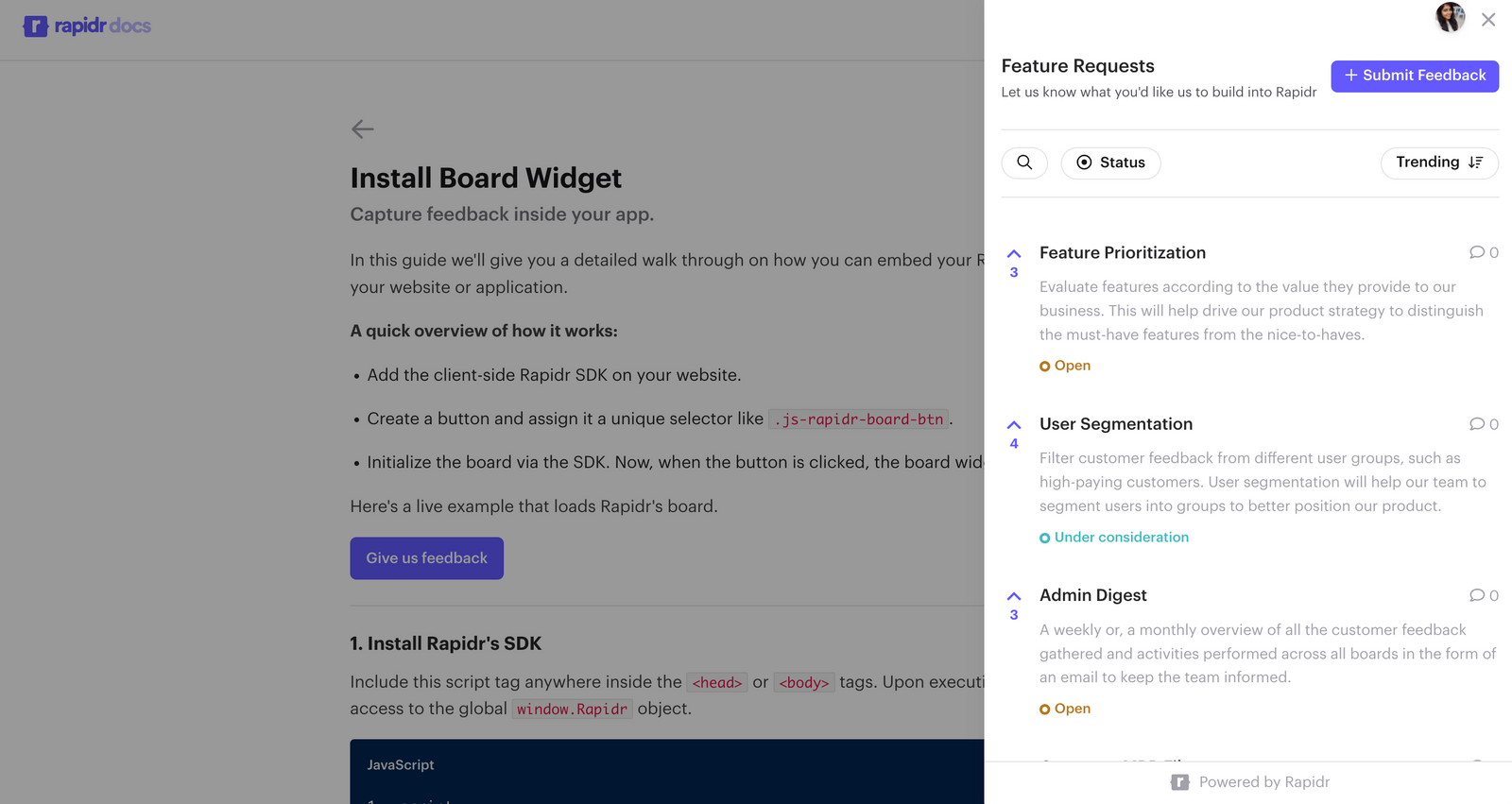
Usability / User Testing
Usability feedback is the process of gathering information about a user's interactions with a product. It is an essential part of the design and development process, which helps understand how users react to an interface or product.
With user testing, you can observe how users interact with your product and identify any problems or pain points.
This type of feedback is precious because it allows you to see how real users interact with your product and identify any issues they may encounter.

A/B testing: It allows you to test different product versions and see how users respond. It helps garner user engagement on different features and gives idea validation on various features of your product.
Beta Test: It allows you to release a new version of your product to a small group of users and get their feedback before releasing it to the general public. Beta testing can help you identify potential problems or issues with your product before it is released.
Social Media Feedback
Social media is very useful for collecting user feedback as it allows you to reach out to large numbers of users all at once. It provides a platform for users to give feedback publicly, which can help identify common issues or problems.
Social media feedback can be likes, shares, retweets, comments, or replies. These are all ways to show appreciation and create a dialogue with your audience.
Some companies use social media feedback to improve their customer service. They will reply to customers on social media channels and try to resolve their issues or problems. Other companies use it as a way of gathering customer insights and ideas for new products that they can create or improve.
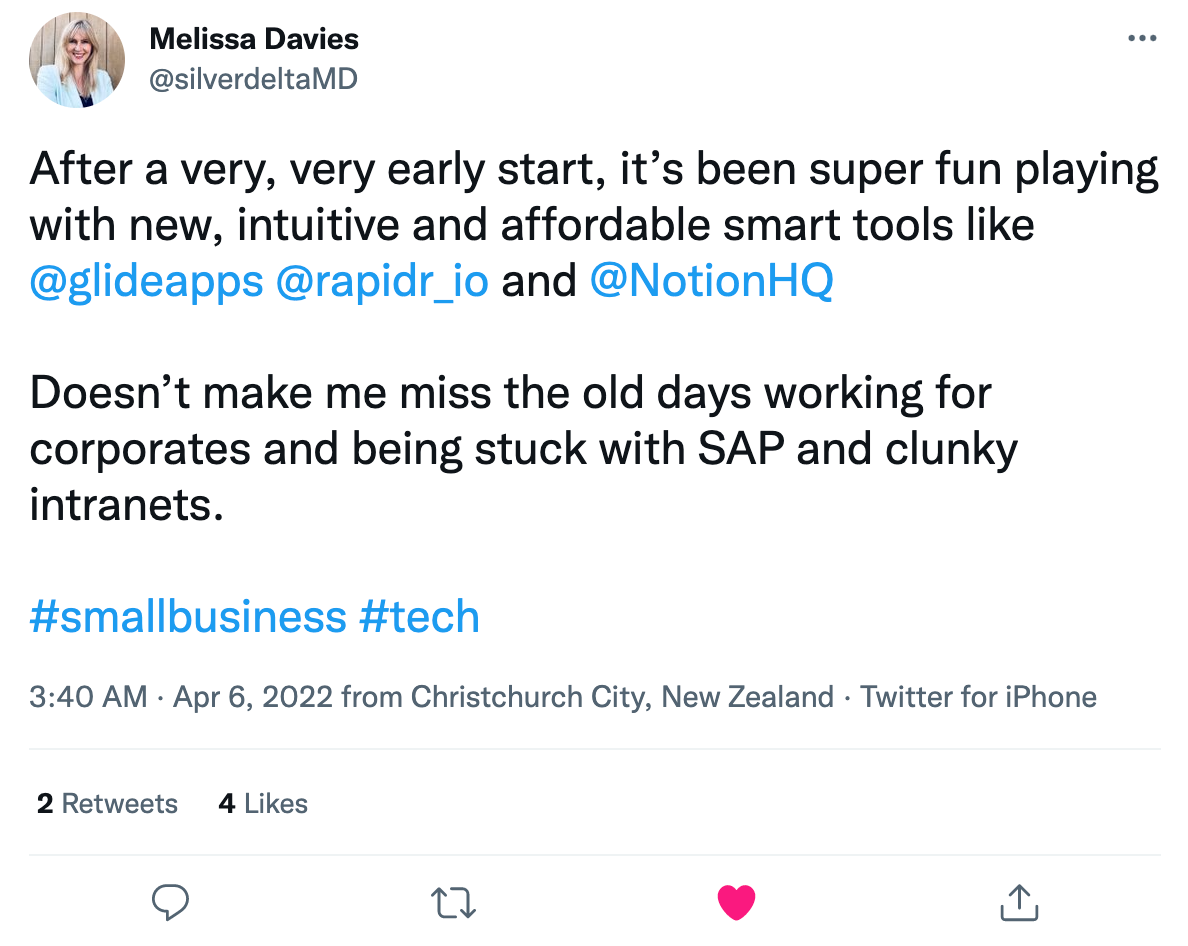
Customer Support Tickets
Customer support tickets contain detailed information about user problems and issues. In addition, customer support tickets can be a great way to identify common issues, user preferences, and problems.
Knowing what customers think about your company and its product is essential. Companies can use feedback from customer support to improve their customer service, product, and marketing strategy.
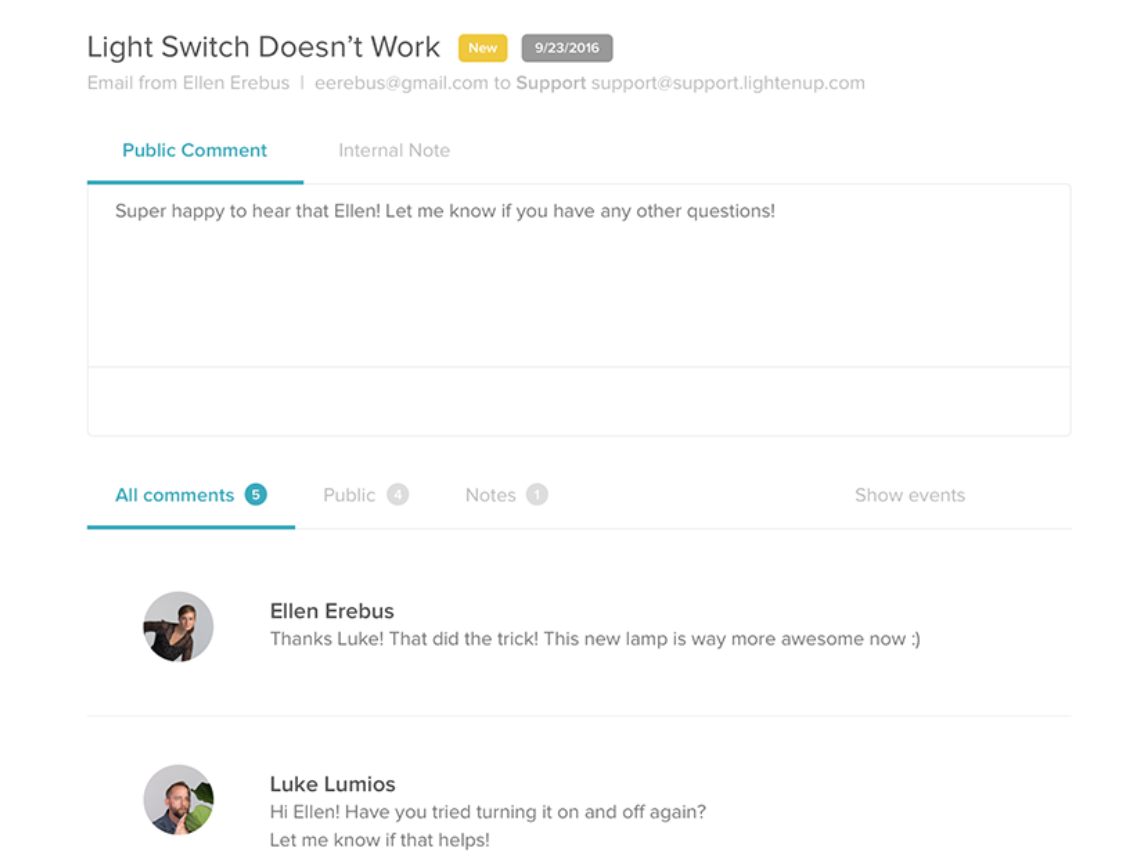
Online Reviews and Analytics
Online reviews and ratings are other valuable sources of feedback. They provide a platform for users to give their honest opinion about your product.
Online reviews are one of the most critical factors in deciding whether to buy a product or not. They can be found for any product, from clothes to food and other services.
Online reviews have become an integral part of the consumer’s decision-making process, and they are often the first thing that is looked at when someone is considering buying a product.
Google Analytics is a powerful tool that can be used to collect user feedback. It allows you to track how users interact with your product and identify any areas of improvement.
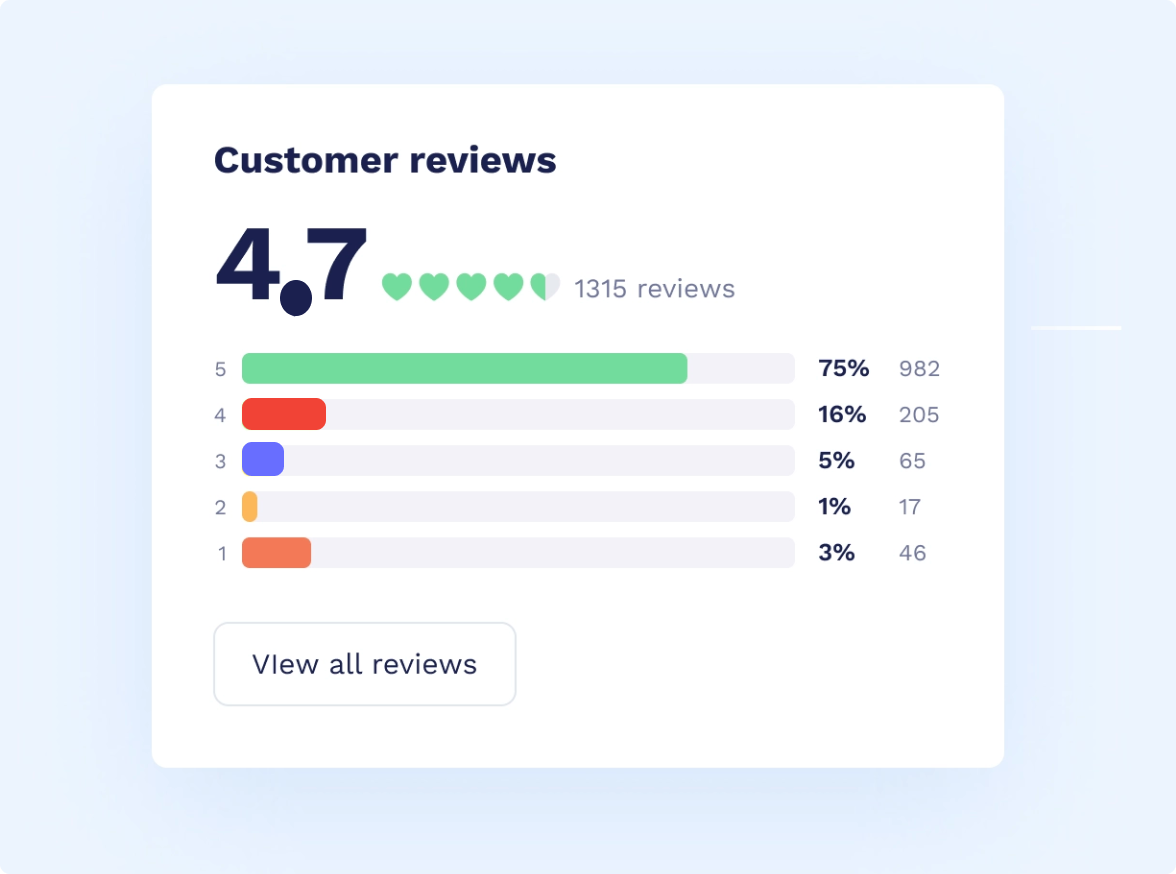
Customer advisory boards
Customer advisory boards, also called product advisory counsel, are an effective way for companies to get feedback from their customers and improve customer service and product quality.
They are usually composed of customers using the company's services. Advisory boards can improve customer service, gather feedback, and improve products or services.
Customer Advisory Boards are designed to bring together participants like C-level executives, technical experts, and end-users to collaborate on product development, provide feedback on the user experience, or mindshare on industry themes and trends. - BMC Software
The benefits of having a customer advisory board include getting valuable feedback that is not readily available elsewhere, building stronger relationships with customers, and increasing customer loyalty.
What to collect user feedback on?
There are some specific things that you should focus on when collecting user feedback. These things include
- The usability of your product
- The design of your product
- The functionality of your product
- The overall user experience
In addition, you should also collect feedback on any specific areas that you are looking to improve, and keep in mind all different types of feedback hold a special meaning in product development.
What to do with the user feedback?
Once you've collected user feedback, it's essential to manage it effectively. This is because user feedback can be valuable for improving your product.
Start by organizing the feedback you've gathered from both customers and teammates. This involves categorizing and sorting feedback so that you can easily find and reference it later.
In addition, you should track the feedback you've collected. This involves keeping track of who gave the feedback, when they gave it, and what they said. Tracking feedback will help you to identify patterns and trends.
Then, prioritize according to your company goals and the urgency of the feedback to further promote the top ones to your product roadmap to keep everyone updated on feedback status.
Finally, announcing the newest releases and responding to the feedback collected is utterly important to close the feedback loop. This involves thanking the person who gave the feedback and addressing their concerns. Responding to feedback shows that you listen to your users and value their input.
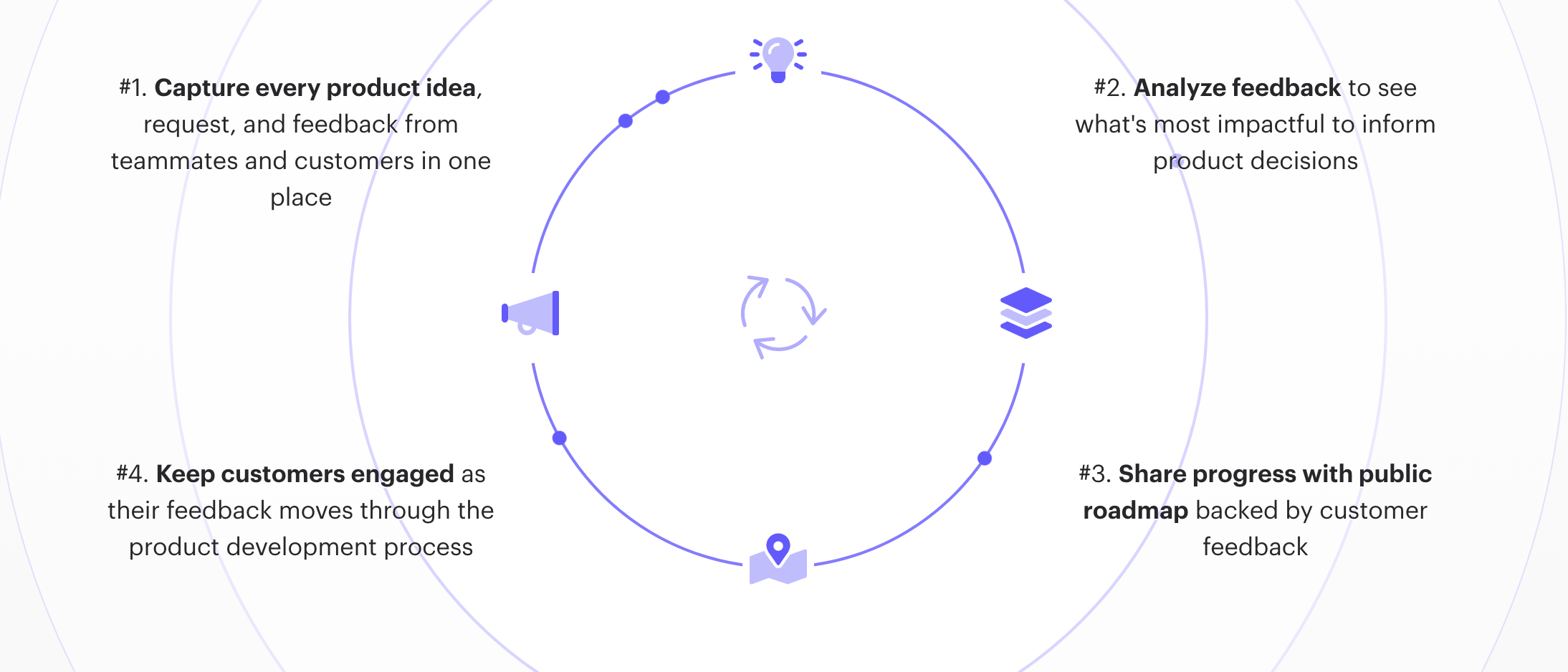
Start Collecting User Feedback Today
Collecting user feedback is a vital part of any product management process. It’s easy for product managers to get lost in it, but by organizing and managing user feedback effectively, you are one step closer to improving the product and the overall user experience.
Rapidr is the fastest and easiest way to collect user feedback. Rapidr’s customer feedback management system allows you to gather prioritized customer feedback, identify and analyze top ideas, manage user expectations with updates, and keep customers engaged by closing the feedback loop.
Incorporate customer feedback into your development process
- Set up a Customer Feedback System
- Collect Actionable Feedback from Customers and Teammates
- Analyze, Prioritize, and Categorize Feedback Data to Make Sense of It
- Act and Have a Specific Product Evolution Plan
- Announce New Features and Product Updates
With Rapidr, you can collect, analyze, and organize feedback and engage with customers as their feedback moves through the development process. Sign up for free and set up a complete customer feedback system to inform and enhance your SaaS customer journey.

